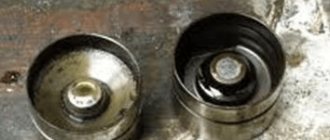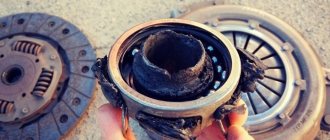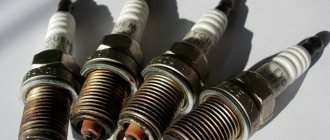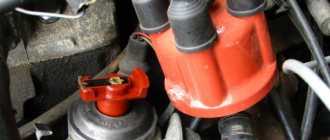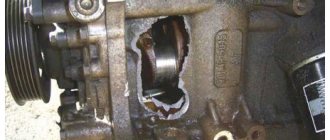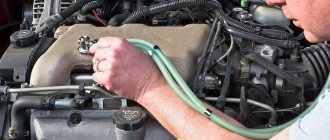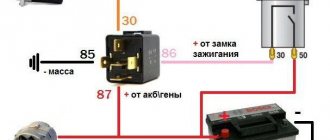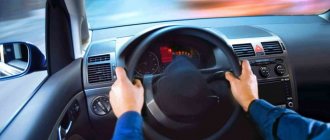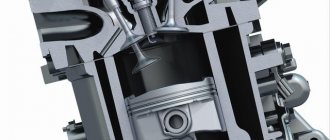A modern car is a whole complex of complex systems and mechanisms. One of the important components of any car is the suspension. It is this that provides the connection between the wheels and the car body. There are several suspension schemes, but if any of them malfunctions, the driver may hear a characteristic knocking sound in the rear wheel while driving. The reasons for this phenomenon may be different. In today's article we will look at why the rear wheel knocks when driving and what can be done about it.
Discs
Many owners install discs of different widths and diameters. This has a positive effect on handling characteristics. However, everything is good in moderation. You need to choose disks wisely.
Pay attention not only to the diameter, width, bolt pattern, but also to the offset. If the disc offset is less than the factory one, the wheel may touch the caliper. As a result, a knock appears in the rear wheel. It is also worth choosing the right width. If the disk and tire are very wide, there is a risk that the wheel will touch elements of the body or suspension. A common case is that the tire rubs against the wheel arch. This occurs when you hit an uneven surface. In this case, you need to replace the tire or roll out the arches.
Wheels and tires
1. A slurping sound coming from the front or rear wheels, right or left. At the same time, the car may begin to move slightly from side to side. There is a puncture in one of the wheels. You can't go any further. Otherwise, you may lose a tire or even a wheel. You need to jack up the car and install the spare tire. If your skills allow and the puncture is small, you can repair it on site.
2. A metallic sound emanating from one of the wheels with a frequency that varies depending on the speed of movement. With a high degree of probability, loose wheel bolts or nuts (depending on the car model) resemble this. The wheel can fall off and roll far, far away. It's good if you don't meet oncoming traffic. You need to stop immediately and check the wheels. It is possible that by the time the malfunction is identified, individual bolts or nuts may already be lost. Tighten the remaining ones tighter and drive at low speed to the nearest workshop or spare parts store, or better yet, call a tow truck. The list of malfunctions in which the operation of the car is prohibited contains the following item:
5.3.
The fastening bolt (nut) is missing or there are cracks in the disk and wheel rims, there are visible irregularities in the shape and size of the mounting holes.
So driving even if one bolt is missing is prohibited.
If you drive carefully (not fast and avoid potholes), you can get to the nearest spare parts store or tire shop without losing a wheel. But provided that there are at least three mounting bolts on the wheel. If the hub has five fasteners and two bolts are missing, make sure that the vacated holes are not located next to each other. It’s better to borrow a bolt from another wheel, so that each wheel ends up missing one bolt. But this is a temporary measure that will allow you to get to civilization and fix the problem.
Rear fenders
Very often, owners of budget cars install plastic fender liners back. They are also called lockers. Since they are not installed on many cars from the factory, owners install them themselves and very often with serious errors. As a result, the fender liner may simply move away from the fastenings. As a result, a knocking sound occurs in the rear wheel when driving, as the locker hits the tire.
A similar situation can occur on a well-secured locker. But this occurs when the car is heavily loaded. As a result, the distance between the locker and the tire decreases. When hitting a hole, the wheel simply hits the plastic protection. As soon as the car drives without a load, the knocking noise disappears. This indicates overload or the installation of a wheel that is too large (a disc of the wrong diameter, or tires with a high profile), as a result of which the suspension travel is greater than the distance between the tread and part of the fender liner.
Shock absorbers
This is another reason why there is a knocking sound in the rear wheel when driving. The average lifespan of shock absorbers is 60 thousand kilometers, but there may be a large error due to driving style and road conditions. A worn shock absorber can be identified by leakage. There will be oil streaks on the surface of the cylinder. However, this is not always the case. You can also recognize a broken shock absorber by the behavior of the car. The car will jump on potholes and sway at speed. In addition, a knocking sound will be heard from the rear wheel when driving. This sound intensifies on bumps. Since the shock absorber cannot be repaired, it is replaced entirely with a new one. And it is advisable to change both sides at once. Their service life is approximately the same, so with a high probability the adjacent shock absorber will require replacement after 3-5 thousand kilometers.
Also, a knocking sound in the rear right wheel when driving can occur due to a broken shock absorber bushing. To check this, just shake the element to the sides. The shock absorber must be securely fastened at the top and bottom. On cars such as the Daewoo Nexia, the rear shock absorber at the top is attached to the body through a rubber washer. If it is even slightly damaged, very loud knocking noises can be made on bumps. At first, the owner will think that it is time to change the shock absorber. But after replacing it, the problem does not go away. Therefore, it is not always necessary to sentence this element immediately. You must first check the condition of all rubber elements that are attached to the shock absorber.
Springs
Over time, the springs sag. However, this is not the only misfortune that can happen to them. So, the coils can burst. As a result, the car not only tilts to one side, but also causes a knock in the rear wheel. The spring does not fit as intended. The solution to the problem is to replace it with a new one.
It is also worth inspecting the rubber gasket of the spring from the top and bottom sides. Over the years of use, rubber deteriorates. As a result, the gasket does not perform its function and the coils of the spring rub directly against the metal.
Knock or hum in the area of the front hubs
The cause of a hum or knock in the front hub is often a wheel bearing in which the rollers with the separator treadmill have worn out excessively, resulting in excessive play. It is not difficult to check this diagnosis yourself.
To check for hum, you need to sharply spin the wheel. If you hear a hum as the wheel rotates, like a metal ball rolling on a sheet of iron, then it’s time to replace the wheel bearing.
Wheel bearings
We continue to study why the rear right wheel knocks when driving. Whether it’s the 9th Lancer or a VAZ, it doesn’t matter – the bearings make the same noise when they wear out. But the sound is very insidious. At first it will be barely noticeable. If it is not detected in time, the broken holder may simply jam the wheel at speed. Also, knocking noise occurs if the bearing is not tightened properly. To diagnose this, just lift the rear wheel on a jack and shake it from side to side.
Note! The bearing should not be over-tightened. You need to leave a small gap in case of thermal expansion. Minor play is allowed. But if the wheel wobbles, this already indicates a problem.
What can sound tell you?
For an experienced driver, an abnormal sound can tell a lot. Any non-standard noise is a fairly reliable and simple “tool” for diagnosing car malfunctions. To make a preliminary diagnosis of your car by sound, you will need two simple steps:
- determine the nature of the sound (knock, rattle, total noise, etc.);
- determine the place where the sound comes from.
The most common abnormal sounds indicating a specific malfunction are:
- knock;
- noise from the interaction of parts rubbing against each other.
A sound in the form of a knock is formed when there is play in any unit between the mating parts.
Often, various sounds and noises are summed up, for example, with increased wear of ball joints and increased play in the wheel bearing.
To more accurately determine the place where the abnormal knocking comes from, you can rock the car with your hands in the parking lot, pressing your weight on top of the wings, above the wheel arches, on each side. It will also be useful to observe and identify the synchronicity (relationship) between the appearance of suspicious sounds and certain operating conditions of the vehicle.
Silent blocks
Whether it is a beam or an independent suspension, in any case, silent blocks are present in the rear suspension. They are designed to reduce vibrations and shocks that are transmitted to the body during operation of the chassis. The service life of silent blocks varies and ranges from 100 to 200 (and higher for a semi-independent beam) thousand kilometers. If these elements are worn out, play occurs. But even a slight play can cause a knock, which will be clearly audible inside the car. As with shock absorbers, this sound will increase on rough roads. How to solve a problem? There is only one way out here. This is replacing silent blocks with new ones. On some cars they are changed separately, on others - together with the suspension arm. After replacement, the sound disappears completely.
Knocking sound when starting off
Some vehicle malfunctions most clearly manifest themselves at start-up , when damaged components bear increased load. A knock when starting off most often indicates critical wear of suspension or transmission elements , as well as simply loose fasteners.
We will tell you in this article what can be the source of extraneous sounds from the front and rear when starting, what problems usually arise in specific models, and whether it is possible to drive if a knock occurs during a sharp start.
Brake system
It can also cause sounds in the rear wheel area. With what it can be connected? The reason will depend on which brake mechanism is installed - disc or drum.
In the first case, we can state that the pads are beating on the disc. This happens very often on budget foreign cars. To solve this problem, it is necessary to inspect the caliper. As a rule, the bushings on which it moves are worn out. Today there are special repair kits that include rubber bands of increased diameter. They are installed instead of the old ones on bushings. After this the knocking noise disappears.
In the case of drums the situation is different. The sound may be due to a warped drum cover. If it has an oval shape, when rotating the element hits the pads. The result is a strange noise. In this case, the pads will have uneven wear when the cover is removed. In this case, the drum must be replaced with a new one.
Malfunctions in the engine compartment
Generator belt. A breakdown can be identified by a high-pitched squeal after starting the engine or when the speed increases sharply. To stop it, you need to tighten the belt. If this does not help or the sound returns after a certain time, change it to a new one.
Water pump. If on XX you hear a thin whistle and/or rumble from the front of the engine compartment, then the pump is faulty. In this case, you need to replace it.
Ignition. A loud metallic knock when accelerating a vehicle indicates detonation (that is, an explosion of the fuel mixture in the combustion chamber). Most likely, the ignition is too early, you filled in low-quality fuel, or a large amount of carbon deposits appeared in the combustion chamber. In addition, detonation can be caused by overheating of the engine or old spark plugs. The above sound is produced by the engine pistons, which take the blows from explosions of the combustible mixture. Prolonged movement with such a sound entails destruction of the engine.
Timing belt Timing noises can be heard very well against the background of the general functioning of the engine. If the chain is loosely tensioned, it makes a rattling-popping sound, which intensifies as the engine speed increases and disappears when the gas is released. But if the car is equipped with a timing belt, and not a chain, there will be no alarming sounds before the break. It just needs to be changed every 60-100 thousand km, depending on the manufacturer's recommendations.
Bearings, pistons and valves. There are several ways to check the quality of the overhaul without disassembling the engine. To do this, just listen to the engine. Thus, if the main bearings of the crankshaft fail, they produce a dull metallic sound when the gas pedal is sharply pressed at idle. The frequency of knocking increases with increasing crankshaft speed. A harsher sound at irregular intervals is caused by excessive crankshaft end play. The connecting rod bearings produce even more sharp noises. When only one of the journals is faulty, the location of the knock can be determined by turning off the spark plugs one by one. A muffled knock comes from crooked pistons. A knocking sound from the exhaust or intake valves that is heard at regular intervals is most likely a signal that the valves need adjustment, or the wear of the valve mechanism has increased, or one of the components of this mechanism is broken. If the knocking noise increases when the engine revs up, the most likely cause is increased valve clearances.
Crankshaft bearing
